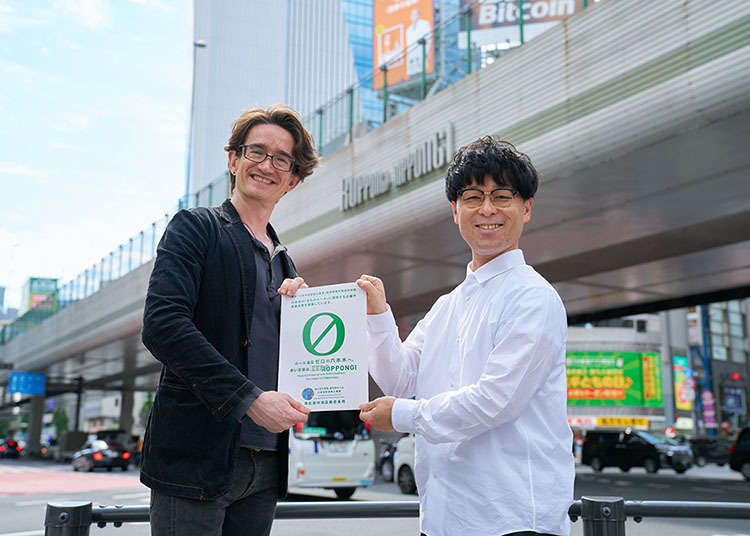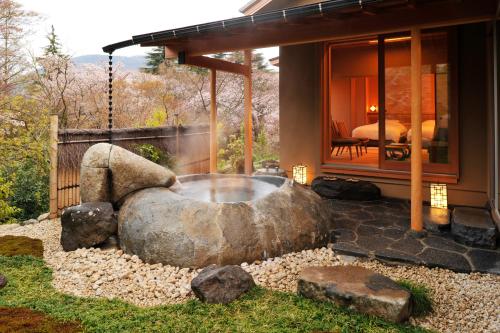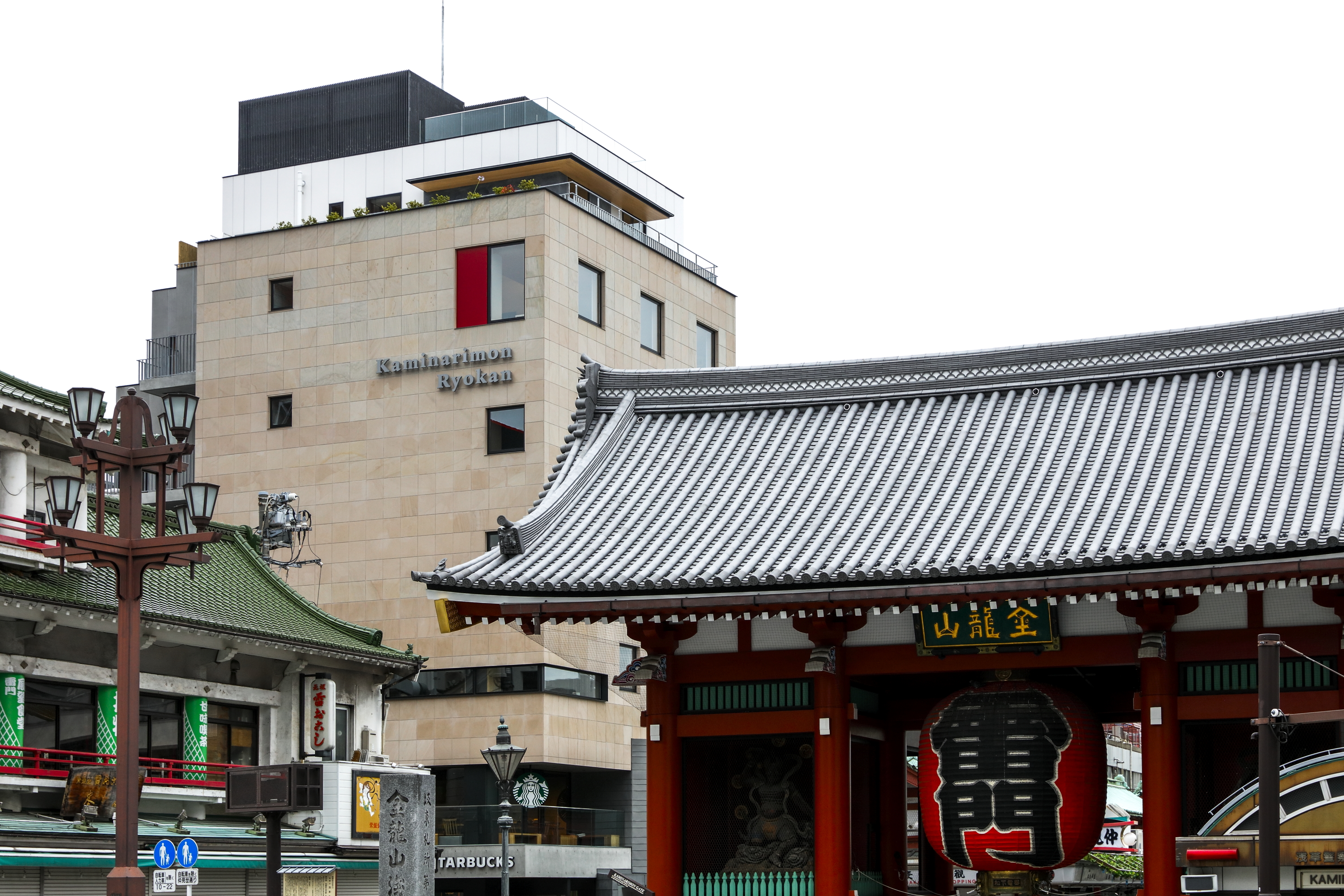
"Roppongi originally thrived on a nighttime economy,” says Hayato Ikehata, Director of the Collaboration Project Section at the Azabu Regional City Office, who promotes collaboration between the local community, visitors, and workers in Minato City, where Roppongi is located. Since the 1960s, Roppongi flourished as a place to dine and party, but the new millennium brought changes.
Mr. Ikehata sat down with Samuel Thomas, Creative Director at a leading marketing agency, to explain the district’s new direction. Mr. Thomas, who works to promote Japan abroad, describes present-day Roppongi as more of an “art town.”
There are notable art museums, like the Mori Art Museum and The National Art Center, Tokyo, which are worth visiting for the architecture alone. In addition, the district is packed with excellent shopping and dining, and other mainstays for tourists.
This shift in generations has resulted in the new Roppongi and the old Roppongi mixing, creating an even more exciting district, but according to Mr. Ikehata, it needs the cooperation of everyone, including tourists, to keep it that way. So, what does that mean?
*This article includes advertising content.
Defining the new Roppongi

Located in central Tokyo, Roppongi is close to other tourist hubs such as Shibuya, Shinjuku, and Odaiba. With its many embassies and sites for the international community to gather, Mr. Ikehata notes that “Roppongi has always been a multinational district that welcomes all nationalities.”
As Roppongi is a place where many people gather, the district is tackling problems such as the cleanliness of the streets, safety concerns, and unethical business practices, which impact both tourists and the local people. As such, the district believes it is important to reach out to people to ensure positive experiences for residents and visitors alike.

A walk around the district clearly shows that a collective cleanup of the community is underway, but it is not yet complete. It can only be achieved if everyone there is willing to be mindful of their actions.
“We want everyone to work together in furthering community-building efforts that help create a place where people are comfortable living or visiting, so that everyone can enjoy Roppongi,” Mr. Ikehata adds. He took Mr. Thomas on a guided walk of Roppongi to illustrate areas needing improvement, as well as tangible initiative successes to understand the situation in Roppongi.

Through the walk, the two discussed their insights on points for improvement and ways to continue transforming Roppongi for the better.
Improving the community together through the Roppongi Charter for Safety and Peace of Mind

During the walk, Mr. Ikehata introduced the Roppongi Project for Safety and Peace of Mind, which was launched to raise awareness of the Roppongi Charter for Safety & Peace of Mind. The Charter sets out the following five rules to make Roppongi a fun, safe, and comfortable city. The Project calls on everyone, both locals and tourists, who have a love of Roppongi to come together for this goal. Mr. Thomas confirmed these goals during his walk with Mr. Ikehata.

1. We Will Prevent Crime

Through patrolling the streets and other safety measures, Roppongi intends to become a district where anyone can have fun. It has also established areas where bicycles cannot be left unattended and encourages the use of bicycle parking lots to eliminate abandoned bicycles on the streets.


Additionally, new public toilets, recommended by Minato City, are being built in Roppongi 3-Chome. The goal of this initiative is to provide “toilets that can be used safely and comfortably” by anyone, particularly women, children, and the elderly. As such, these toilets have been fitted with various safety measures. Innovative initiatives can be expected based on the Public Restroom Maintenance Policy established by Minato City in FY2023.
2. We Follow the Rules When Smoking

Smoking while walking in the street is becoming an issue in Japan, especially in cities. Minato City encourages smokers to use designated smoking areas in order to keep the streets free of secondhand smoke and cigarette litter. Maps of designated smoking areas are available from the link below.
3. Creating a Beautiful Neighborhood

Most people value a clean and beautiful environment for living, working, or visiting. That’s why the challenge for Roppongi is to prevent the accumulation of trash in front of local businesses. Trash left in the streets disturbs passersby and creates an unsafe environment. Tokyo overall has an insufficient number of public trash cans, which effectively shifts responsibility for proper trash disposal to individuals. Roppongi is actively addressing this problem and urging everyone to cooperate in maintaining trash-free streets for a cleaner environment.

4. We Make Our Streets Safe and Secure

Not only does loitering lead to the accumulation of trash in the street, it also disturbs other people. Although consuming alcohol outdoors is legal in Japan, Mr. Ikehata believes that “outdoor drinking is more appropriate at picnics or similar gatherings, rather than on the sidewalks of Roppongi or other urban areas.” Loitering in the streets can lead to drinking, violence, and littering. Minato City believes it is vital to collaborate with visitors to resolve this problem, so that Minato City can create a safer and more pleasant environment for residents and tourists.

5. Try to Operate Business Without Causing Trouble to Neighbors

In business or shopping districts in Japan, restaurant, bar, and nightclub employees often solicit customers on the street, and they sometimes involve deceptively overcharging customers. To combat this practice, which also targets international visitors, Minato City is working closely with Minato City Safety Patrols and the police to aid guidance.
Mr. Ikehata believes that “soliciting customers has decreased from how it used to be.” Many businesses in Roppongi want to cooperate with the neighborhood’s rules, and not engage in disruptive behavior, and they are registered as supporting the Roppongi Charter for Safety and Peace of Mind. It is worth checking out the list of businesses .

The Roppongi Project for Safety and Peace of Mind concentrates on crime prevention, responsible smoking, neighborhood cleanliness, street safety, and ethical business practices. The concept of the project revolves around calling on everyone in the district to uphold the rules for their own sake, in order to improve safety and cleanliness in the city while maintaining an environment where residents and visitors can enjoy themselves.
Building a Welcoming and Harmonious Future for Roppongi

To ensure your own and others' safety and enjoyment in Roppongi, please support the district’s efforts by complying with the Roppongi safety and security measures listed above. Roppongi continues to evolve as a vibrant center of art, while retaining its historic reputation for its nightlife culture. These measures reveal the district’s commitment to maintaining its international appeal while fostering a more harmonious and enjoyable urban environment for all who live in or come to visit this iconic district in Tokyo.
- Area
- Category
-
Sponsor Content How To: Sightseeing
*Prices and options mentioned are subject to change.
*Unless stated otherwise, all prices include tax.
-

Beat the Heat in Japan's Famous Hot Springs: 5 Recommended Summer Springs
-

Japan’s new canned chu-hai with fresh lemon slice: disappointing gimmick or drink revelation?
-

Japan's Rainy Season Set To End July 20th! Summer Is Expected to See Sizzling Highs
-

[Taste Test!] A New Product in the Popular 'Pikachu Tokyo Banana' Series! Adorable Special Cans Now Available
-

5 Quirky Japanese Summer Festivals You Must See: Dancing, Fire, Bellybuttons & More!
-

Experience the Magic: Mt. Fuji and Lake Kawaguchi Fireworks Festival (August)
Inspiration for Accommodations
-

10 Asakusa Hotels Featuring Views of Tokyo Skytree®
-

8 Scenic Hakone Lodgings with Breathtaking Views of Mount Fuji from Your Room
-

Make Your Tokyo Stay Comfortable! 10 Convenient Hotels with Airport Shuttle Service
-

10 Open-air bath Onsen Ryokans in Hakone for Ultimate Relaxation
-

10 Family-Friendly Hotels with Comfortable Family Rooms in Asakusa
-

Asakusa's Comfortable Long Stay Hotels: 10 Picks with Complete Kitchens
-

Experience Luxury: Hakone's 10 Best Five-Star Accommodations
-

Best Picks for Hotels Near Asakusa Station – Top 10 List
-

10 Best Hotels in Tokyo with Gyms for a Comfortable Workout Experience
-

Enjoy a Comfortable Stay!10 Concierge Service Hotels in Hakone
-

Atami 1-Day Itinerary: Exploring Japan's Castle & Hot Springs Resort Town Near Tokyo!
-

Budget Sightseeing: Tokyo Subway Tickets & Day Passes for Tourists
-

10 Important Japanese Phrases to Know Before You Enter a Japanese Convenience Store!
-

Complete Guide to Buying Japanese Medicine in Japan: Phrases and Vocabulary You Need to Know
-

Annual Survey Reveals Most Attractive Prefectures in Japan
-

Seiyudo Ginza: Visiting Japan's Largest Seller of Antique Katana Swords
- #best ramen tokyo
- #what to buy in ameyoko
- #what to bring to japan
- #new years in tokyo
- #best izakaya shinjuku
- #things to do tokyo
- #japanese nail trends
- #what to do in odaiba
- #onsen tattoo friendly tokyo
- #daiso
- #best sushi ginza
- #japanese convenience store snacks
- #best yakiniku shibuya
- #japanese fashion culture
- #best japanese soft drinks













